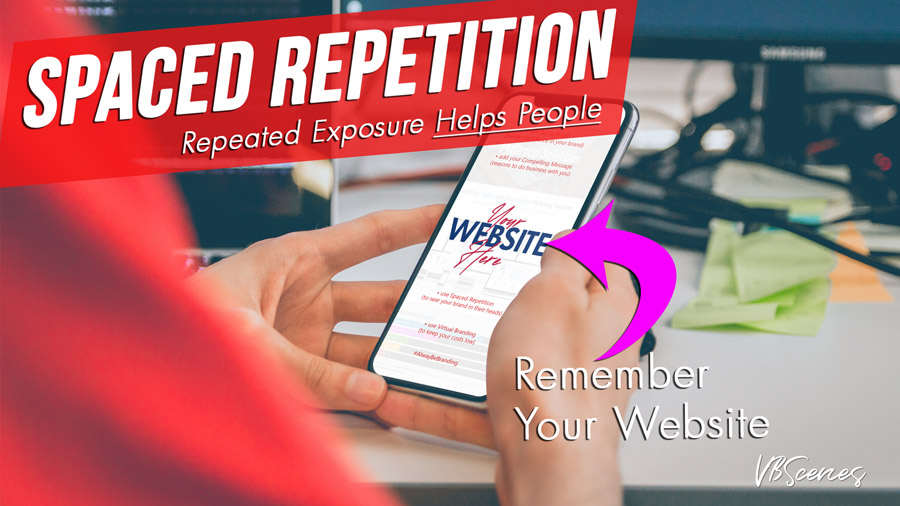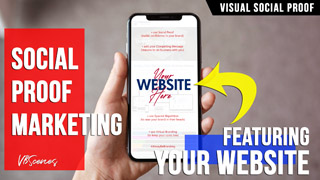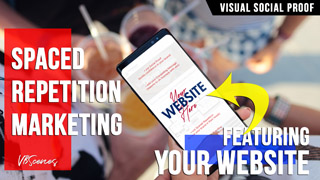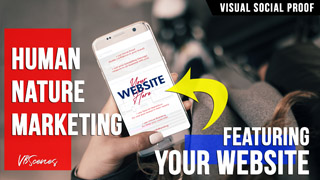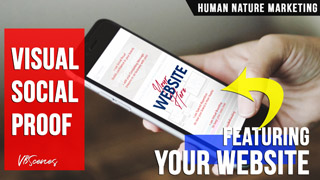Executing Effective Spaced Repetition Marketing Campaigns
Spaced repetition marketing leverages our psychological tendencies for improved recall and preference development to drive business results. This comprehensive guide will explore best practices for structuring spaced repetition marketing, showcasing compelling social proof, and continually optimizing campaigns.
Why Spaced Repetition Marketing is So Effective
Before diving into execution, it’s important to understand why spaced repetition marketing is uniquely powerful compared to traditional advertising approaches.
The key principle is that appropriately timed message repetition strengthens memory associations rather than causing fatigue. Research by Nielsen shows brand awareness doubles on average when individuals are exposed to ads 3-12 times. However, traditional repetition sees steeply declining returns. Spaced repetition marketing circumvents this by introducing carefully timed gaps.
“Properly inserting periods of no exposure between touchpoints allows short-term memory to consolidate into long-term retention,” explains Dr. Robert Heath, marketing professor at the University of Bath, “This makes messages seem fresh while still leveraging repetitive neural pathway activation in the brain.”
Over time, audiences come to recall your messaging faster, develop preference for your brand, and associate your company with past positive emotions. The science-backed approach shapes consumer psychology to drive conversions.
“Incorporating spaced exposure, message variation, and highly engaging content creates an incredibly persuasive cocktail over the lengthy customer journey,” said Sujan Patel, content marketing expert and bestselling author.
Structuring An Effective Spaced Repetition Marketing Plan
The foundation for executing spaced repetition marketing is mapping out an editorial calendar that plots your channels, assets, and frequency schedule ahead of time.
Mapping Out All Brand Touchpoints
First, audit the various channels and properties through which you currently market. Common touchpoints include:
- Social media content across platforms like Facebook, Instagram
- Paid ads on platforms like Facebook, Instagram, Google, Reddit
- Email newsletters sent to subscriber base
- New blog content posted to your site
- Guest post content placed on industry websites
- Webinars conducted live or presented as recordings
- Video series published to YouTube or social channels
- In-person events, conferences, and trade shows
- Direct mail campaigns with postcards or brochures
- Sales closing nurture programs
- Retargeting display ads for site visitors
- Cold outbound messaging
catalogue all current assets that can be incorporated into messaging across these channels as well, from brand logos to product photos to customer testimonial videos.
Analyze past campaigns and existing analytics data to identify your highest converting offers or calls to action for repetition as well.
Determining Optimal Frequency
Next, determine the ideal average frequency at which to display your repetitive messaging. This varies significantly based on channel and customer lifecycle stage.
For example, social media ads might be spaced out at one week intervals whereas retargeting display ads can repeat on a daily basis due to their precise targeting and positioning at the conversion phase.
According to data from Mediarails, the following general frameworks maximize memorability:
- Awareness Phase: Touchpoints every 2-3 weeks
- Consideration Phase: Touchpoints every 1-2 weeks
- Decision Phase: Touchpoints every few days
“We’ve found repeating specific offers across Facebook and Instagram no more than every 10-14 days prevents declining relevancy while still benefiting from the repetition effect,” shared Meghan Keaney Anderson, VP of Marketing at HubSpot.
“For cold subscribers seeing our ads for the first time, we front-load 3 exposures in week one followed by single exposures week two and three. This capitalizes on hourly, daily and weekly memory without oversaturating,” said Growth Marketer Jonathan Zisis.
Building An Editorial Spaced Repetition Calendar
With your mapped assets and ideal frequencies defined, build out an editorial calendar that plots exactly when and where every repetitious touchpoint occurs over a 6-12 month timeframe.
This calendar essentially sequences out your channels to define the spaced messaging schedule, specifying channel details like:
- July 5th: Publish Facebook Ad #1 (3k Impressions Target)
- July 19th: Publish Facebook Ad #2 (3k Impressions Target)
- August 2nd: Publish Facebook Ad #3 (3K Impressions Target)
- August 16th: Publish Facebook Ad #4 (3k Impressions Target)
And so on…You incorporate planned releases of new content assets, paid ad variants, or broadcasts into the same calendar based on your content strategy.
Adding In Variations Over Repeated Exposures
Without variations, repetitiveness still causes declining returns and fatigue over time. To combat this, the core offer/messaging can remain consistent across touchpoints while the creative aspects around it change.
For example, an ecommerce retailer promoting a seasonal sale will keep that central discounted offer consistent across each exposure. However, the specific products shown, supporting lifestyle imagery, and caption messaging is switched up with every repetition. This refreshment helps sustain interest and response rates.
Email marketing platform AWeber showed including slight creative variants in their drip campaigns increased clicks by 22%.
Results Analysis & Frequency Optimization
Track engagement rates, conversion rates, recall metrics and other data over the initial 3-6 months executing your spaced repetition marketing calendar. If certain message variants or frequency of repetitions show declining returns, tweak your schedule and test alternatives.
“The ideal frequency and channel mix evolves over every quarter we repeat content based on bottom-line profitability indicators. We have to continually optimize spaced timing and elements.” – VP Demand Generation, SaaS Company.
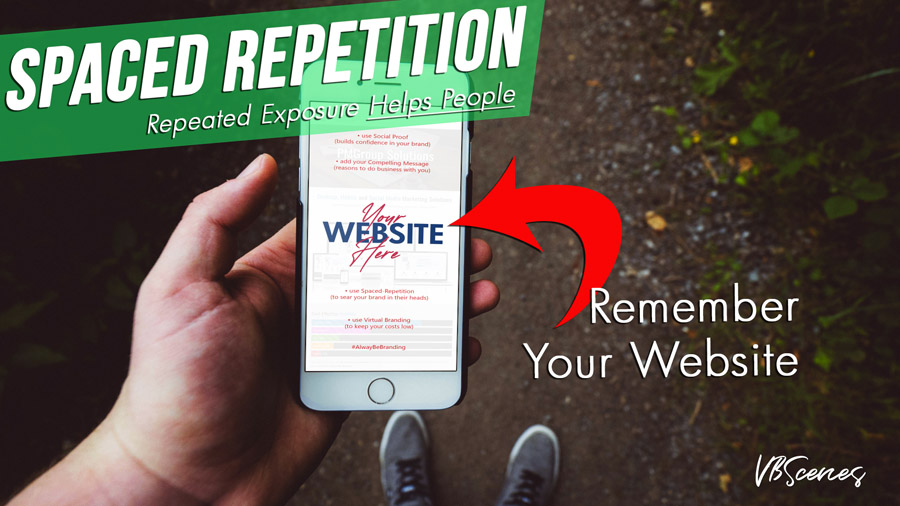
Showcasing Social Proof Within Your Spaced Repetition Marketing
While creative variation of actual offers prevents declining repetitiveness, there is one element that you can and should repeat in content without fatigue. That element is social proof.
The Power of Social Proof Messaging
Social proof refers to showing your products or services being positively used and endorsed by other real people. Demonstrating social proof triggers one of the most persuasive psychological drivers of our behavior – social conformity bias. This instinctual herd mentality makes us follow the crowd.
Incorporating testimonials, customer reviews, user-generated content, and endorsement symbols like logos into touchpoints taps into social proof dynamics for added influence. Studies show that such proof of utility or third party validation lifts conversion rates high as 20-34%.
Matching Social Proof to Awareness Stage
Like most marketing messaging, optimal social proof focuses on aligning with the buyer’s journey stage. At the early awareness phase focused on education, more indirect proof like expert endorsements, celebrity partnerships and case study examples make services seem credible on a third party level:
“We compiled vetted statistics and compliance badges appropriate for conservatively evaluating new investing platforms during our exploratory research phase. This built initial trust and validity.” shared Fintech company Bloom.
During the consideration phase focused on comparing specific solutions, direct proof like testimonials, reviews and customer content from those with first-hand experience has greater relevance:
“Testimonial segments from other enterprise leaders provided the most tangible confidence when comparing vendors for our global expansion needs. We witnessed specific outcomes from organizations with similar requirements to ours.” – Procurement Manager at multinational manufacturing company
And at the decision phase when consumers are rationalizing final purchase options, the most vivid specific examples of end results and ultimate value hit hardest:
“Seeing local before-and-after projects with metrics matched to our planned renovations provided that final sense of tangible proof as homeowners. We felt choosing that contractor would reliably lead to the patio space we envisioned for hosting.” – Recent Homeowners in Dallas/Fort Worth area.
Showcasing A Range of Social Proof
With this context in mind, showcase a range of social proof formats aligned to each phase when repeating touchpoints across the conversion funnel:
- Expert articles or interviews validating methodology
- Badges of security, excellence or compliance
- Testimonials from satisfied customers
- Specific examples and case studies
- User-generated content like reviews or submissions
- Endorsements from recognizable brands
For example, a B2B SaaS company could showcase a well-known publisher confirming trend data in an initial blog post driving awareness. A subsequent nurture email later in the funnel features a case study example of an enterprise client achieving ROIs. And closing cost proposal paperwork features logos of major brand clients for assurance.
Refreshing Social Proof Shown
Avoid repeating the exact same social proof assets continuously. While keeping offers consistent, change up the specific testimonial, expert quote, client logo or UGC featured across different exposures. This slight content refreshment increases relevance across the buyer’s journey by showcasing a diverse range of advocates tailored to each phase.
“Refreshing social proof visuals while keeping product messaging consistent over repeat touchpoints boosts conversion rates.” stated Jenn Chen, former marketing director at SaaS company Appcues.
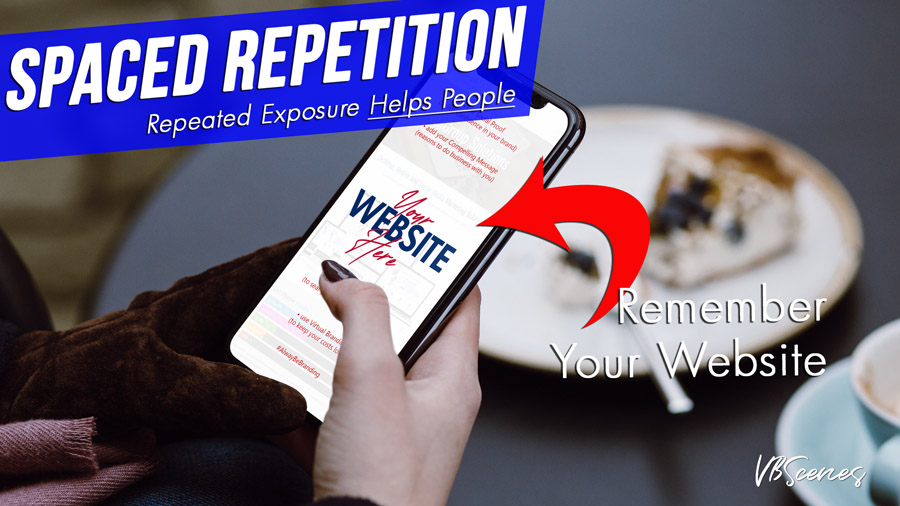
Leveraging Memory & Learning Principles in Spaced Repetition
You can amplify the effectiveness of spaced repetition marketing further by incorporating additional psychological phenomena related to memory formation and Recall.
The Zeigarnik Effect
The Zeigarnik effect refers to the tendency to remember incomplete or interrupted tasks better than completed tasks. People recall unresolved goals, form associations faster to temporary contexts, and are more likely to return to unfinished tasks later on.
Brands can manufacture this effect deliberately within spaced repetition by exposing consumers to the beginning of conversion funnels periodically without directly pushing for completions each time. The unresolved positive experience sticks, priming users for subsequent sequences that eventually trigger the full purchase tasks.
For example, a community course platform could promote starting their free trial membership repeatedly across channels over 6 months. But only periodically prompt users to actually enroll in full priced courses upon subsequent exposures. The unfinished trial experience would resonantly hold attention until converted down the line.
State-Dependent Memory
Psychology shows we encode memories associated with our physiological state at the time of experiencing events. State-dependent memory means recall accuracy substantially increases when our physical/emotional condition closely matches initial encoding.
Brands can trigger state-dependent recall by having repetitious touchpoints recreate emotive responses using sensory detail, scenarios and framing aligned to past exposures.
For example, a life insurance company might overlay messaging with feelings of worry for family well being. A resort could describe the excitement and tranquility of vacations past. Aligning inner state through messaging ensures audiences mentally travel back to original branding exposure for enhanced clarity and retention speed.
The Peak-End Rule
The peak-end rule means that the most intense points of an experience and its final moments disproportionately dominate our overall memory rather than intermediate phases. Brands should engineer peak positive emotions during exposures and conclude on resonating calls to action.
Conversion rate optimization specialist Paras Chopra explained how he incorporated this effect: “My shopping cart page repeats visuals of highest happiness from the website at larger size all the way at the top. This triggers peak positive emotions repeatedly, while dynamic scarcity messaging ends each exposure with urgency.”
Continually Optimizing Spaced Repetition Campaigns
While this article has outlined research-backed best practices, the ideal frequencies, offers and creative surrounding your spaced repetition marketing will need to evolve based on empirical performance across channels.
Testing Alternative Frequencies
If you notice declining conversion rates or disengagement at certain intervals, tweak your repetition cadence through A/B experiments to isolate the optimal channel-specific rates.
For example, you might test 3 paid search ads exposures over 2 weeks against 2 exposures over 3 weeks to determine which statistical change lifts commercial intent best.
Optimizing Repeated Ad Sets
Certain creative variants or social proof formats will inevitably resonate better for memoirs. Try Split testing alternative visuals, captions and other elements to maximize each exposure, switching assets in based on highest performance every few months.
“We saw a drastic increase in email clickthrough rates when we focused on bright nature imagery rather than staff photos in our monthly newsletter touchpoints.” – Email Marketing Director
You essentially continually adapt proven combinations until market conditions or consumer preferences shift noticeably.
Evaluating Channel Mix Over Time
It’s vital to evaluate metrics not just on isolated exposures but in aggregate across channels over longer campaign execution periods. Holistically assess which channel vehicles and conversion flow combinations drive the most profitable customer actions over weeks and months.
“We discovered from multi-touch attribution that our most lucrative sign-ups actually convert 90 days after the first social click rather than direct conversions, shifting our channel strategy priorities significantly.” – VP of Digital Acquisition
This holistic analysis should tie spaced repetition frequency clearly to definitive business results like return on ad spend, lifetime value, referrals and retention boosted by memorability.
Closing Thoughts On Spaced Repetition Marketing
When executed based on memory science learnings around ideal timing, conversion funnel stage matching and social proof dynamics, spaced repetition marketing can profoundly increase results.
“Over long horizons, spaced repetition matched to buyer journeys cuts through the clutter to embed brand recall and affinity into consumer psychology unlike any other method.” – Chief Growth Officer
Brand consistency over time builds familiarity and trust by continually reinforcing messaging with strategically timed gaps to combat fatigue. Variations in supporting content keep things fresh and relevant tied to shifting mindsets across purchase pathways.
Complementary behavioral psychology effects magnifyrepetition further when incorporated. Strategic unfinished exposure, emotive state recreation and impact peaks sustain intrigue while powerfully cementing brand associations.
The ultimate strength of spaced marketing comes down to skillfully incorporating science-backed tactics while still diligently optimizing real performance data continually to maximize memorability over months and years.
Are you ready to explore integrating a spaced repetition approach? Let our marketing specialists craft a customized growth strategy utilizing these powerful techniques.
Spaced repetition marketing is a strategy that uses the opinions and actions of others to influence potential customers. It is based on the psychological phenomenon of social proof, which states that people tend to follow the behavior of the majority of the experts in a given situation.
Key Resources for Understanding Spaced Repetition Marketing
Below are some of the top websites that provide in-depth knowledge and real-world examples of the concept and application of spaced repetition marketing in marketing and user experience design:
- E-Student: Piotr Wozniak is a well-respected authority in spaced repetition marketing, named “the inventor of a technique to turn people into geniuses” by Wired magazine in 2008
- Allego: Allego is a platform that offers modern learning that delivers real business results. Spaced repetition marketing in sales training is a critical part of sales training reinforcement. Learn how your team can achieve desired performance improvements.
Other Factors Related to Spaced Repetition Marketing
Social Proof Images
Social proof images are powerful tools in marketing, especially when combined with spaced repetition strategies. These images, which typically show satisfied customers or celebrities endorsing a product, leverage the psychological tendency of individuals to imitate the behavior of others. By incorporating these images into a spaced repetition marketing campaign, businesses can reinforce their message and build trust with their audience over time.
Social Proof Marketing
Social proof marketing is a technique that uses the power of peer influence and authority to persuade potential customers. It operates on the principle that people are more likely to engage with a product or service if they see others doing the same. When integrated with spaced repetition tactics, social proof marketing can be an effective way to enhance brand recall and encourage consumer action at various stages of the buying process.
Visual Social Proof
Visual social proof, such as user-generated content, customer testimonials, and influencer endorsements, serves as a compelling form of evidence for a brand’s value and reliability. In the context of spaced repetition marketing, visual social proof can be strategically placed across different channels and at varying intervals to maximize exposure and influence consumer perception and behavior positively.
Human Nature Marketing
Human nature marketing focuses on understanding and leveraging innate human behaviors and tendencies for marketing purposes. By incorporating principles of psychology, such as the desire for social acceptance or the influence of emotional storytelling, into spaced repetition marketing campaigns, businesses can create more engaging and persuasive content. This approach helps in forming stronger emotional connections with the audience, thereby enhancing the overall impact of the marketing efforts.
Elevate Your Marketing Strategy Now!
In a world where trust is money, can you afford to be left behind? Dive deep into the revolution of Spaced Repetition Marketing and make your mark with our cutting-edge Virtually Branded Scenes. Click here now to join us and embark on a journey to unparalleled digital success, trust, and conversions!

